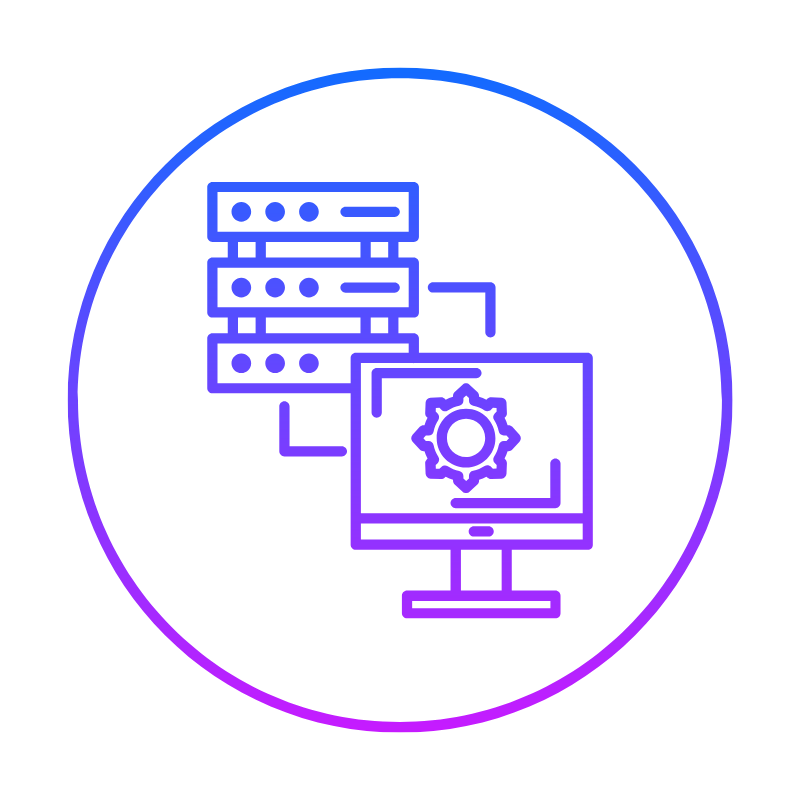If you’re running an online business in the Philippines, you’ve probably heard some buzz about the new tax regulations.
Let’s face it – taxes aren’t exactly the most exciting topic, but they’re crucial for keeping your business legit and thriving.
In this post, we’re getting deep into online business tax in the Philippines.
We’ll break down the recent changes, what they mean for you, and how to stay on top of your tax game.
Trust me, understanding this stuff can save you a lot of headaches (and money) down the road.
So, grab a coffee, and let’s get into it!
First, Understand the New 1% Withholding Tax
Alright, let’s talk about the big change that’s got everyone talking – the new 1% withholding tax.
Here’s the deal:
The Bureau of Internal Revenue (BIR) has introduced a 1% withholding tax on online sellers.
But what does this actually mean?
Basically, it’s a small slice of your sales that gets set aside for taxes before you even see the money.
Think of it like a tiny savings account for your taxes.
Here’s the breakdown:
- The tax applies to half of the gross remittances made by e-marketplace operators and digital financial service providers to sellers.
- It kicks in when your annual earnings exceed ₱500,000.
- This isn’t a new tax – it’s just a new way of collecting existing income tax.
Now, you might be wondering, “Do I have to pay this on top of my other taxes?”
Good news – the answer is no!
This withholding tax is actually a pre-payment towards your annual income tax.
It’s like putting money in a piggy bank throughout the year, so you’re not hit with a huge tax bill all at once.
Here’s why this matters:
- It helps level the playing field between online and brick-and-mortar businesses.
- It makes tax collection more efficient for the government.
- It can actually make your life easier by spreading out your tax payments.
But here’s the kicker – this tax isn’t just for the big players.
Even if you’re a small-time seller on platforms like Shopee or Lazada, you need to be aware of this.
The BIR is casting a wide net to ensure everyone contributes their fair share.
Impact on Online Sellers
So, how will this new tax affect you as an online seller in the Philippines?
Let’s break it down:
For small sellers: If you’re making less than ₱500,000 annually, you’re off the hook for now.
But keep an eye on your sales – if you cross that threshold, you’ll need to start planning for this tax.
For larger sellers: If you’re already raking in more than ₱500,000 a year, this tax will apply to you.
But don’t panic – remember, it’s just 1% of half your gross remittances.
Here’s the real impact:
- Simplified tax payments: Instead of a big lump sum at the end of the year, you’re paying a little bit with each sale.
- Better cash flow management: You can plan your finances more accurately, knowing that a portion of your taxes is already being taken care of.
- Increased transparency: This system makes it easier to track your tax contributions throughout the year.
But it’s not all smooth sailing.
Some challenges you might face:
- Adjusting your pricing: You might need to factor in this tax when setting your prices.
- More complex bookkeeping: You’ll need to keep track of these withholdings to claim them as credits later.
- Potential cash flow issues: If you’re operating on tight margins, even a 1% reduction in your immediate income could be significant.
Here’s a pro tip: Use this as an opportunity to upgrade your financial management skills.
Start tracking your sales more closely, and consider using accounting software to make the process easier.
Remember, knowledge is power when it comes to taxes!
Compliance and Registration Requirements
Let’s talk about staying on the right side of the law.
Compliance might sound boring, but it’s crucial for keeping your online business running smoothly.
Here’s what you need to know:
Step 1: Register with the BIR
This is non-negotiable.
Every online seller needs to be registered with the Bureau of Internal Revenue.
Here’s what you’ll need:
- A valid ID
- Proof of address
- Business registration documents (if you have them)
Step 2: Get your Certificate of Registration (CoR)
Once you’re registered, you’ll receive a Certificate of Registration.
This is like your business’s ID card.
You’ll need to submit a copy of this to any e-marketplace or digital financial service provider you use.
Step 3: Submit a Sworn Declaration (SD)
If your annual gross remittances are less than ₱500,000, you need to submit a BIR-received Sworn Declaration to your e-marketplace operators or DFSPs.
This tells them that you’re below the threshold for the withholding tax.
Important dates to remember:
- For new sellers: Submit your SD upon application
- For existing sellers: Submit by January 20 each year
- If you exceed ₱500,000 during the year: Submit immediately
Step 4: Keep accurate records
You’ll need to track:
- Your total sales
- Taxes withheld
- Expenses (for deductions)
Step 5: File your taxes
Even with the withholding tax, you still need to file your income tax returns.
The good news?
You can use the withheld amounts as tax credits.
Here’s a pro tip: Consider using tax preparation software or hiring a tax professional.
It might seem like an extra expense, but it can save you money (and stress) in the long run by ensuring you’re fully compliant and taking advantage of all possible deductions.
Remember, compliance isn’t just about avoiding penalties.
It’s about building a sustainable, legitimate business that can grow without legal hiccups.
Role of E-commerce Platforms and Digital Financial Service Providers
Let’s talk about the big players in this tax game – the e-commerce platforms and digital financial service providers (DFSPs).
These are the Shopees, Lazadas, GCashes, and Mayas of the world.
They’re not just there to help you sell; they now play a crucial role in the tax collection process.
Here’s what you need to know:
1. Tax Withholding
These platforms are now responsible for withholding the 1% tax from your sales.
They act like a middleman between you and the BIR.
Here’s how it works:
- When a customer buys from you, the platform collects the payment.
- Before sending you the money, they deduct 1% of half the gross remittance.
- This deducted amount is then sent to the BIR on your behalf.
2. Verification of Seller Registration
E-commerce platforms and DFSPs are required to ensure that all sellers using their services are registered with the BIR.
This means:
- You’ll need to provide your BIR Certificate of Registration to use these platforms.
- If you’re not registered, you might be prevented from selling until you comply.
3. Providing Tax Certificates
After withholding taxes, these platforms are obligated to provide you with withholding tax certificates (BIR Form 2307).
This is crucial because:
- It serves as proof of the taxes withheld from your sales.
- You’ll need these certificates when filing your income tax returns to claim tax credits.
4. Reporting to the BIR
These platforms are required to report all withholdings to the BIR.
This means:
- Your sales data is being shared with the tax authorities.
- It’s more important than ever to ensure your reported income matches what these platforms are reporting.
Here’s a key point to remember: Make sure you’re using a BIR-registered account for your online selling.
This means:
- If you’re using GCash or Maya for payments, it should be a business account registered with your BIR-registered trade name.
- Don’t use personal accounts for business transactions – it could cause issues down the line.
Pro tip: Regularly check the reports provided by these platforms.
Make sure they match your own records.
If there are discrepancies, address them immediately to avoid tax complications later.
Remember, these platforms are now your partners in tax compliance.
Understanding their role can help you navigate this new tax landscape more effectively.
Practical Tips for Managing Online Business Taxes in the Philippines
How can you actually manage all this tax stuff without losing your mind?
Here are some practical tips to keep you on track:
1. Keep Meticulous Records
This is non-negotiable.
You need to track:
- Every sale
- Every expense
- Every tax withholding
Why? Because accurate records are your best defense against tax issues.
Plus, they help you make smarter business decisions.
2. Separate Personal and Business Finances
Open a separate bank account for your business.
Use it exclusively for business transactions.
This makes tracking income and expenses so much easier.
3. Set Aside Money for Taxes
Even with the withholding tax, you might owe more at the end of the year.
Set aside a percentage of each sale for taxes.
A good rule of thumb is 20-30% of your profit.
4. Use Accounting Software
Trust me, this is a game-changer.
Options like QuickBooks or Xero can:
- Automatically track your income and expenses
- Generate financial reports
- Help you prepare for tax time
5. Understand Your Tax Obligations
Know what taxes you need to pay and when.
This might include:
- Income tax
- Value-added tax (VAT) if your sales exceed ₱3 million annually
- Local business taxes
6. Take Advantage of Deductions
Keep track of all business expenses.
These can reduce your taxable income.
Common deductions include:
- Home office expenses
- Internet and phone bills
- Inventory costs
- Shipping fees
7. Consider Professional Help
If your business is growing, consider hiring:
- A bookkeeper to manage day-to-day finances
- An accountant for tax planning and filing
Yes, it’s an expense, but it can save you money (and stress) in the long run.
8. Stay Informed
Tax laws change.
Stay up-to-date by:
- Following the BIR’s official channels
- Joining online seller communities
- Attending webinars or workshops on business taxation
Pro tip: Use a tax calendar.
Mark important dates like filing deadlines and when to submit reports.
This helps you stay ahead of your tax obligations.
Remember, managing your taxes effectively isn’t just about compliance.
It’s about understanding your business’s financial health and making informed decisions for growth.
Challenges and Solutions in the New Tax
Let’s face it – navigating this new tax landscape isn’t going to be all smooth sailing.
But don’t worry, for every challenge, there’s a solution.
Let’s break down some common issues and how to tackle them:
Challenge 1: Increased Administrative Burden
With the new withholding tax, you’ve got more paperwork and tracking to do.
Solution:
- Invest in good accounting software to automate most of the work.
- Set aside specific time each week for financial admin.
- Consider outsourcing to a virtual assistant or bookkeeper if the workload is too much.
Challenge 2: Cash Flow Management
The 1% withholding might impact your immediate cash flow, especially if you’re operating on tight margins.
Solution:
- Adjust your pricing strategy to account for the withholding tax.
- Improve your inventory management to reduce tied-up capital.
- Consider offering pre-orders to improve cash flow.
Challenge 3: Understanding Complex Tax Rules
Let’s be honest, tax regulations can be confusing, especially when they’re new.
Solution:
- Attend free webinars offered by the BIR or business organizations.
- Join online communities of fellow sellers to share knowledge.
- Don’t hesitate to consult with a tax professional for complex issues.
Challenge 4: Ensuring Compliance Across Multiple Platforms
If you’re selling on various platforms, keeping everything compliant can be tricky.
Solution:
- Use a centralized system to track sales and taxes across all platforms.
- Regularly reconcile reports from different platforms with your own records.
- Consider using a multi-channel e-commerce management tool.
Challenge 5: Dealing with Tax Audits
The thought of a tax audit can be scary, but being prepared makes it much less daunting.
Solution:
- Keep all your records organized and easily accessible.
- Maintain a clear audit trail for all transactions.
- If audited, consider hiring a tax professional to assist you through the process.
Challenge 6: Adapting to Frequent Changes in Tax Laws
Tax regulations, especially for online businesses, are evolving rapidly.
Solution:
- Subscribe to updates from the BIR and relevant business associations.
- Build flexibility into your business processes to adapt to changes quickly.
- Network with other online sellers to stay informed about industry trends and challenges.
Remember, you’re not alone in facing these challenges.
Many online sellers are in the same boat.
The key is to stay proactive, informed, and adaptable.
Pro tip: Build a support network.
Connect with other online sellers, join business associations, and don’t hesitate to seek professional advice when needed.
Final Thoughts
Let’s wrap this up!
We’ve covered a lot of ground when it comes to online business tax in the Philippines.
From the new 1% withholding tax to compliance requirements and practical management tips, you’re now armed with the knowledge to navigate this new tax landscape.
Remember, staying on top of your taxes isn’t just about avoiding problems with the BIR.
It’s about building a strong, sustainable business that can grow and thrive in the long term.
Here are the key takeaways:
- Understand the new tax regulations and how they apply to your business.
- Keep meticulous records and separate your business finances.
- Use tools and software to make tax management easier.
- Stay informed about changes in tax laws and regulations.
- Don’t hesitate to seek professional help when needed.
The world of online business is evolving, and so are the tax laws that govern it.
By staying informed, proactive, and organized, you can turn these changes into opportunities for your business.
Remember, every successful business owner has had to learn this stuff.
You’ve got this!
Keep hustling, keep learning, and here’s to your success in the exciting world of online business in the Philippines!
Additional Resources
- BIR: Online sellers must now pay withholding tax
- When the BIR says ‘mine’ to online sellers
- Understanding the 1% Withholding Tax on Online Sellers
- 10 Lucrative Online Business Ideas You Can Start in the Philippines Today
- Latest Online Business Requirements in the Philippines
FAQs
Q1: Do I need to register with the BIR even if I’m just a small online seller?
A: Yes, all online sellers are required to register with the BIR, regardless of their size or income level.
It’s a legal requirement and helps ensure fair competition in the marketplace.
Q2: How often do I need to file tax returns as an online seller?
A: Generally, you’ll need to file quarterly income tax returns and an annual income tax return.
However, the frequency may vary depending on your business structure and income level.
It’s best to consult with a tax professional or check the BIR website for the most up-to-date information.
Q3: Can I claim the withheld taxes as a credit when I file my income tax return?
A: Yes, the 1% withholding tax can be claimed as a tax credit when you file your income tax return.
Make sure to keep all withholding tax certificates (BIR Form 2307) provided by the e
 Web HostingCost-effective shared hosting solutions
Web HostingCost-effective shared hosting solutions Reseller HostingStart your own hosting business without tech hustle
Reseller HostingStart your own hosting business without tech hustle Affiliate ProgramEarn commission by referring customers to our platforms
Affiliate ProgramEarn commission by referring customers to our platforms cPanel HostingHosting powered by cPanel (Mostly user friendly)
cPanel HostingHosting powered by cPanel (Mostly user friendly) Windows HostingOptimized for windows based-applications and sites
Windows HostingOptimized for windows based-applications and sites Domain SearchFind and register available domain names in seconds
Domain SearchFind and register available domain names in seconds All DomainsExplore and register domain extensions across the world
All DomainsExplore and register domain extensions across the world Domain Transfermove your domain to us with zero downtime and full control
Domain Transfermove your domain to us with zero downtime and full control Whois LookupLook up domain ownership, expiry dates and registrar information
Whois LookupLook up domain ownership, expiry dates and registrar information .com DomainSecure the most recognized domain for global credibility
.com DomainSecure the most recognized domain for global credibility VPS HostingScalable virtual servers. Full root access. Faster speed.
VPS HostingScalable virtual servers. Full root access. Faster speed. Managed VPSNot a tech expert? Choose our fully managed VPS server.
Managed VPSNot a tech expert? Choose our fully managed VPS server. Dedicated ServersGet the full power and complete control of your own physical server.
Dedicated ServersGet the full power and complete control of your own physical server.
